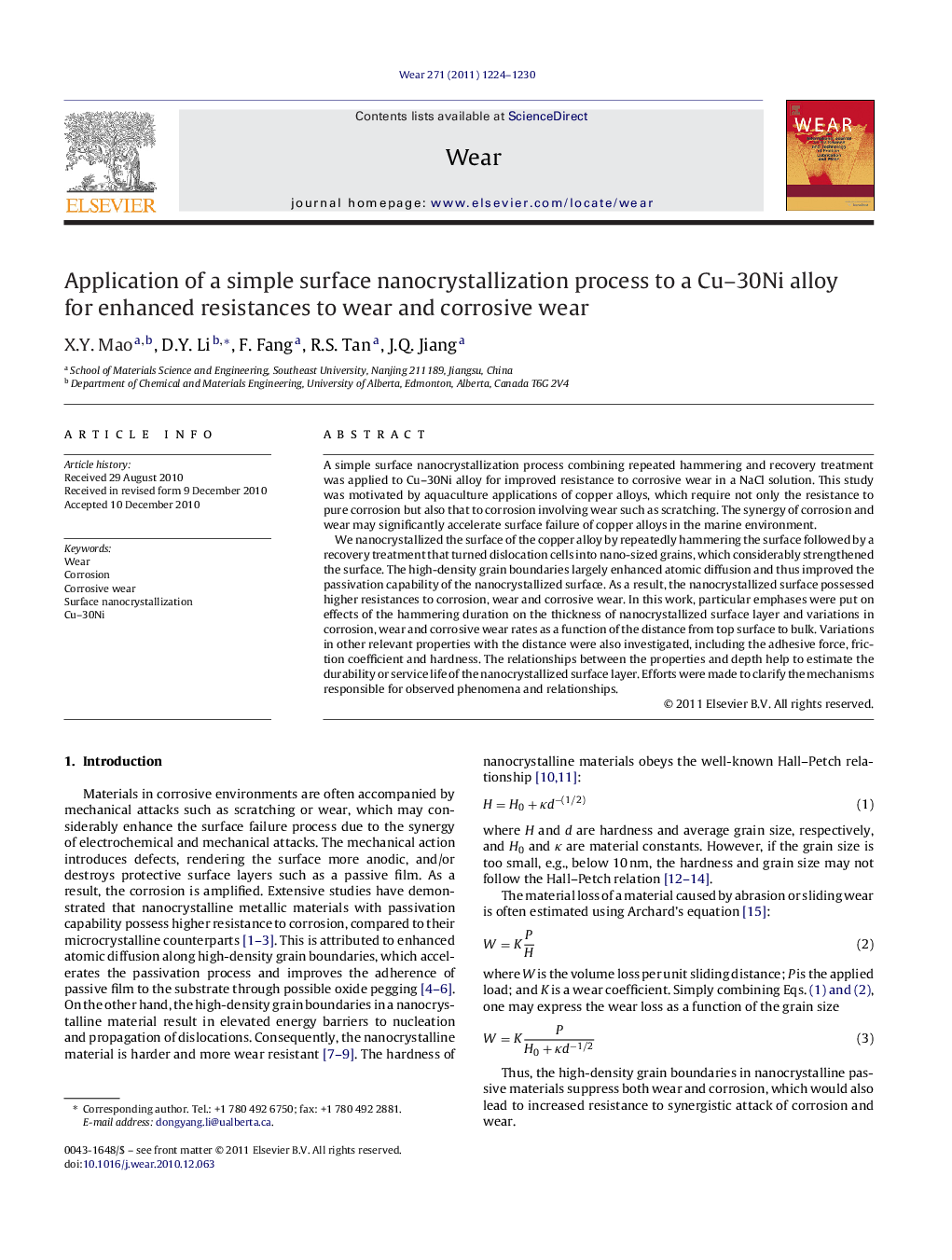| Article ID | Journal | Published Year | Pages | File Type |
|---|---|---|---|---|
| 618152 | Wear | 2011 | 7 Pages |
Abstract
We nanocrystallized the surface of the copper alloy by repeatedly hammering the surface followed by a recovery treatment that turned dislocation cells into nano-sized grains, which considerably strengthened the surface. The high-density grain boundaries largely enhanced atomic diffusion and thus improved the passivation capability of the nanocrystallized surface. As a result, the nanocrystallized surface possessed higher resistances to corrosion, wear and corrosive wear. In this work, particular emphases were put on effects of the hammering duration on the thickness of nanocrystallized surface layer and variations in corrosion, wear and corrosive wear rates as a function of the distance from top surface to bulk. Variations in other relevant properties with the distance were also investigated, including the adhesive force, friction coefficient and hardness. The relationships between the properties and depth help to estimate the durability or service life of the nanocrystallized surface layer. Efforts were made to clarify the mechanisms responsible for observed phenomena and relationships.
Related Topics
Physical Sciences and Engineering
Chemical Engineering
Colloid and Surface Chemistry
Authors
X.Y. Mao, D.Y. Li, F. Fang, R.S. Tan, J.Q. Jiang,
